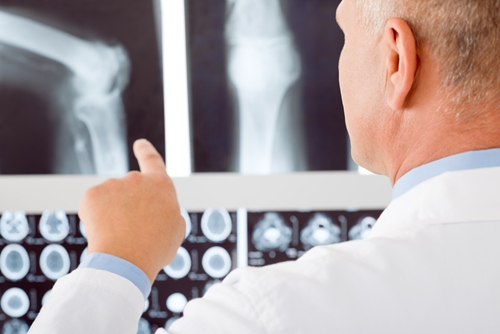
If you’re reading this, there’s a fairly good chance you’ve broken a bone at some point in your life. According to the American Academy of Orthopedic Surgeons, an average of six million Americans face this situation every year. Bone breakage is a common but serious injury that usually requires immediate and direct medical intervention. If left unattended, the injury can worsen or fail to heal properly.
What causes bones to break?
Bones are fairly rigid, but are able to bend some in response to an outside force. If the pressure on them is too great, however, they can fracture. How serious the break is depends on the force applied and the angle at which it occurred. In minor situations, the fracture may be nothing more than a slight crack that heals readily. In more extreme circumstances, such as a car accident, the bone can shatter in multiple places. This requires a longer rehabilitation process.
There are multiple types of fractures. They include:
- Stable fractures, where the bone is more or less in one piece and the damaged ends line up.
- Open, compound fractures, where the skin has been pierced, either by the bone itself or the trauma that caused it to break. In these cases, the risk of infection amplifies the seriousness of the situation.
- Transverse fractures, which have breaks that are situated horizontally.
- Oblique fractures, which have breaks that are situated on an angle.
- Comminuted fractures, which are bones that are broken into three or more pieces.
What are the most commonly broken bones?
In an infographic, MK Orthopedics broke down the most commonly fractured bones. They identified these five as the most prevalent:
- The clavicle, better known as the collarbone, is prone to breakage because of its long shape. It is often injured during contact sports, and can require surgery depending on the severity of the case. In minor instances, a sling like the Joslin Ultimate Arm Sling may be sufficient.
- The arms. According to MK’s research, about half of all broken bones in adults occur in the arm. These can take weeks or months to heal, during which time it can be tough for the patient to perform everyday tasks such as eating and bathing.
- The wrist. While technically part of the arm, MK spotlighted the wrist because it is the most common type of arm fracture. It usually happens when a person tries to brace themselves during a fall, landing with their entire weight on a relatively small area.
- The ankle, commonly broken during soccer, basketball and rugby. Ligament damage often occurs at the same time.
- The foot. Feet have a lot of bones: almost 25 percent of the bones in your body are in your feet. This density means that a high incidence of breakage, which often occur from stress of repeated trauma.
“About half of all broken bones in adults occur in the arm”
How do casts help bones heal?
Casts don’t heal broken bones on their own. Rather, they hold the affected area in place so that the body can heal itself naturally. Generally, if an injury requires a cast, a doctor will first clean and disinfect the area. Then, she will likely take an x-ray to determine the extent of the damage. With this visual, she can line up the broken ends of the bone, in a process known as “setting.” This helps the bone heal straight. For particularly severe fractures, metal pins may be required to hold everything in place while it heals, but this is thankfully rare. Once the bone is set, a cast can be applied so that it does not move.
 Keeping casts dry is important.
Keeping casts dry is important.How can casts be protected?
It is vital that casts are protected from water and moisture. If a cast is damaged, the quality of the healing could be compromised. Even “waterproof” models do not provide complete protection and people must wrap their cast in plastic each day prior to taking a shower, which can be a hassle. Summer activities like swimming or running through sprinklers are also much trickier to navigate with a cast that can not get wet.
Luckily, however, there are products that can make things easier. A cast protector, like Seal Tight, provides a ready barrier that keeps the device from getting wet without being obtrusive or bulky. With a cast protector, you can continue living the life you had before the injury, confident that you are doing everything you can to ensure proper healing.
Tags: Arm, Broken Bones, Cast Protector, Clavicle, Heal, Joslin, Leg, Protector, Seal-Tight, Sling